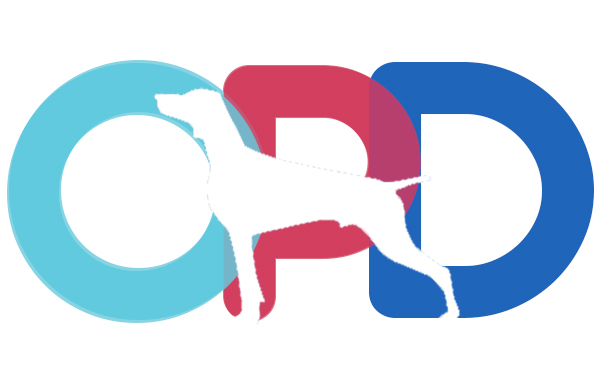We will help you understand and overcome the transition problems, including…
- Transition schedule
- Getting through to the picky eaters
- Dog Fasting Guidelines
- Symptoms of natural cleansing when switching from “bad” to organic dog food
- Herbs to ease the transition
What else should you know about a natural dog food diet?
Should I quit cold turkey when introducing cold turkey?
Whether switching to raw natural dog food or simply another brand of your current kibble, your dog’s new diet should be introduced gradually. Give their bodies time to adjust.
At the beginning of the transition, serve mostly the current food with a very small amount of the new food mixed in. Over time, slowly reduce the old while proportionately increasing the new:
- New brand of same food – 4 to 5 day transition.
- Moist to dry food (or vice-versa) – 4 to 5 day transition. If going from moist to dry, try adding a little warm water to the dry food.
- Raw dog food – 4 to 5 week transition.
But my dog won’t eat it!
Wanna bet?
First, serve the new natural dog food diet in a place where your dog is comfortable and used to eating.
Try mixing the new food in with the old using the transition guidelines in the section above.
To make it a bit tastier, warm it up. PeTA also suggests adding nutritional yeast, olive oil, tomato sauce, powdered kelp, baby food that does not contain onions or other seasonings to make the food smell and taste better.
If you still get a black nose in the air or if your dog eats around the new food, it may be time to try fasting based on the below guidelines.
Dog Fasting Guidelines
The four phases of proper dog fasting are:
- Phase 1 – feed less food at each meal
- Phase 2 – liquid only (water, vegetable juices and broths) for 2 to 3 days
- Phase 3 – add natural solid foods gradually to liquid diet
- Phase 4 – add more solid foods and introduce dog dietary supplements, which is often the least desirable part of the new diet for dogs
If your dog goes a couple of days without eating at all, hold strong! Your dog’s instinct to survive will not let him starve himself. Some dogs will go 2 to 3 days without eating a new food, but they always come around.
According to Dr. Richard Pitcairn, “obese dogs have been known to fast on just water and vitamins for as long as six to eight weeks without ill effect. Wild carnivores fast naturally” to give their bodies time to digest and rid themselves of bacteria found in their prey.
Two days should be plenty for your dog.
If your dog does not eat (or eats very little) after 2 days, it could be a sign that they are in suboptimal health.
You should visit your local holistic veterinarian to work on natural treatments that will improve their overall health.
Symptoms of Natural Cleansing when Switching from “Bad” Food to a Natural Dog Food Diet
Dogs have a much shorter digestive tract than we do, so their bodies have a tougher time digesting a natural dog food diet they are not used to. A shorter digestive tract also means that a new “good” diet may shock toxins from the old diet out of their body. Dog diarrhea and loss of appetite are common.
Taylor Tips!When my owners learned about a natural dog food diet and changed my meals, I felt horrible at first. After a few days, I felt better than ever! |
Other NORMAL reactions to a natural dog food diet include:
- A “lethargic” period of 2 to 3 days within 2 months of starting the new diet with more time sleeping
- Dandruff
- Dark and strong-smelling urine or feces
- Dead hair falls out in preparation for new, healthy hair growth
- Excreting dog worms
- “Not themselves”
- Returning symptoms from previous problems
- Small amounts of mucus or blood in the feces
- Sores on skin
There are some signs to look out for, however, that may warrant a trip to the vet:
- Depression, irritability or forgetfulness that were not present before the new diet
- Energy level decreasing steadily for more than a few days
If the above problems persist, your dog could be allergic to one of the new foods. Try to determine and eliminate which food by introducing them one at a time.
If your dog simply does not look healthy to you after several days on the natural dog food diet, it never hurts to get a check up. Use your best judgment – we always play it on the safe side. Let your vet know your natural and holistic goals and they can work with you after diagnosing your dog.
Herbs to Ease the Transition to a Natural Dog Food Diet
Being proactive or waiting and seeing how your dog reacts?
Either way, there are several herbs that will help to prevent or improve the symptoms of a rougher transition to a natural dog food diet. Herbs can also have a number of other positive effects – take a look at the Herbal Medicine for Dog Care page for more on this.
Based on the specific problem, try using the following ONE AT A TIME. These suggestions are meant to nudge you in the right direction – you should work with your holistic vet to determine the right amount of each.
- Digestion and appetite – Alfalfa
- Digestion, dog worms, intestinal issues – Garlic
- Dog skin disorders – Burdock
- Weak nervous system (epilepsy, tremors, paralysis, twitching) – Oats (oatmeal)
Do you believe in holistic pet care? If so, please tell your friends about us. Thank you for supporting our efforts!
